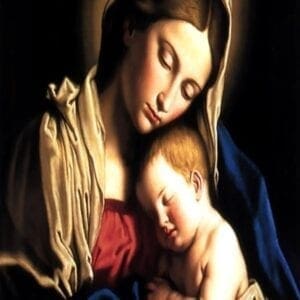The Five Women in the Lineage of Jesus
“Mary: The Woman of Obedience”
Matthew 1:1-17, Luke 1:26-55
Christmas Eve 2020
Wayne J. Edwards, Pastor
Matthew’s genealogy of Jesus included the names of 42-men whom God chose to carry the seed-line of the Savior from Abraham, the father of the Jews, to Joseph, who became the husband of Mary, by whom Jesus was born, who is called the Messiah.
- Matthew also listed the names of five women who were also instrumental in Jesus’ lineage; four of whom were very embarrassing to the Jewish upper class.
- Verse 3 – Judah was the father of Perez by
- Verse 5 – Salmon was the father of Boaz by Rahab and Boaz was the father of Obed by
- Verse 6 – David was the father of Solomon by Bathsheba who had been the wife of Uriah.
- While their main contribution was to birth a man-child through which the seed-line of the Savior would be carried to the next generation, their life-stories were recorded in the scriptures to illustrate God’s plan of redemption.
- If God’s grace could reach these four women, and it did, then there was hope for the rest of mankind.
- Tamar is a woman of hope. Tamar was a Gentile widow who seduced her father-in-law into a sexual union from which Perez was born. Tamar shows us that no pain is too deep for God’s grace, for out of that incestuous relationship came:
- Rahab – a woman of faith. Rahab was a Canaanite harlot who hid the spies Joshua sent on reconnaissance into Jericho. She later married one of the spies; Salmon. Rahab shows us that no past is too bad for God’s grace, for out of that relationship came Boaz, who married:
- Ruth – a woman of love. Ruth was a Moabite widow who risked her life to remain with her mother-in-law in Israel. Ruth shows us that no problem is too big for God’s grace, for while there, God arranged for her to marry Boaz, and out of that relationship came Obed, the grandfather of David, who had the adulterous affair with:
- Bathsheba – a woman of unlimited grace. Bathsheba was a faithful wife who was so beautiful she caught the eye of King David and did not resist his sexual advances. Bathsheba shows us no stain of sin is too deep for God’s grace, for as a result of that sinful, adulterous affair, Bathsheba lost her husband and her first child with David. After their repentance, God blessed them with Solomon, who continued the seed-line of the Messiah down to Joseph, the husband of Mary, who birthed Jesus.
The fifth woman listed in Matthew’s genealogy is Mary, the woman of obedience, whose actions revealed to us that no task is too great for God’s grace.
- Mary could have been as young as 12-years old when the Holy Spirit “graced” her to be the mother of Jesus, and not more than 14-years old when she gave birth to Him.

- In Luke 1:48, Mary said all generations would regard her as a woman profoundly blessed by God because of the wonderful privilege He gave to her.
- Over the next 24-hours, Mary’s name will be mentioned more than any other name on earth, other than Jesus.
1. Removing the Myths about Mary – Luke 1:26-30 – “Do not be afraid, Mary, for you have found favor with God.”
The Greek word “favored” means “to be graced” or accepted by God for His purpose; to receive God’s unearned blessing.
- Some have exalted Mary beyond what the Scriptures teach.
- Some have given Mary attributes that belong only to God; making her the object of worship, or the channel through which one worships God.
- Some say Mary was untouched by the original sin, that she was perpetually filled with God’s grace; a perpetual virgin who never had children by Joseph, and who ascended into heaven without experiencing death.
- In 1 Timothy 2:5, Paul said, “There is one God and one mediator between God and man; the man Christ Jesus.”
- In chapter 1:18-25, Matthew said Joseph kept Mary a virgin until Jesus was born, but in chapters 12-13, he identifies Jesus’ half-brothers as James, Joseph, Simon, and Judah.
- Mary was an extraordinary woman, but she was born a sinner, and in need of a Savior, like all women.
- In Luke 1:47-52, even Mary acknowledged her need for a Savior, and she rejoiced that God was providing a Savior for her, as well as for the whole world.
2. Reviving the Miracle Involving Mary – Luke 1:31-35 – “Behold, you will conceive in your womb and bear a son, and you shall name Him Jesus.”
The prophecy of Isaiah 7:14 was fulfilled in the immaculate conception of Jesus in Mary’s womb.
- Some have denied the veracity of that prophecy, saying it referred to an event in the day it was written, rather than to the birth of Jesus Christ 700-years later.
- The answer is found in the translation of the word “virgin!”
- Non-Christian translators use the word “almah,” which meant a young woman of marriageable age.
- Greek translators used the word “Parthenos,” which could only mean “virgin” – one who had not had sexual relations with a man.
- The Jews understood Isaiah’s prophecy to predict a virgin girl would miraculously conceive and bear a son, who would be known as Immanuel – God with us.
- In Matthew 1:22-23, Matthew said Mary’s conception and Jesus’ birth fulfilled the prophecy of Isaiah 7:14.
3. Remembering the Message Given to Mary – Luke 1:39-45 – “Blessed is the fruit of your womb, and how has it happened to me, that the mother of my Lord would come to me?”
In Hebrews 10:5-7, the writer said, “Sacrifice and offering You have not desired, but a body You have prepared for Me.”
- Even before His birth, Jesus knew He was entering into this world, in the body of a human being, to be sacrificed for sin.
- Not only did He know it, He did it willingly; not out of pity for our plight, but out of His love for God the Father, who loved us so much.
- Jesus came to earth to show us many things about God, and about ourselves, but the primary reason He came was to give His life as a ransom for our sins and to do that, He had to become one of us.









